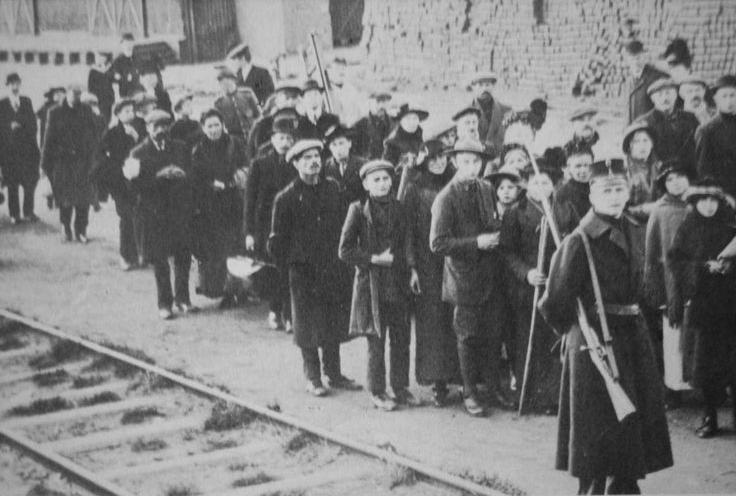
World War I Belgium: Ostend
|
Belgium has only 70 km of coast on the North Sea and Ostend or Easr End is set square in the middle of it. Ostend is Belgium's only important coastal city. We first see any record of Ostend in the early-medieval era. It began as a small coastal village built on the east-end (oost-einde) of an island. Thetown grew, reaching the status of 'town' (about 1265). This was very important in the medieval era because the inhabitants were permitted to hold a market and to build a market hall. The location was fortuiotous, located between England (the source of wool) and Burges, one of the most important cities in the in the Flemish textile trade--making it one of the most prosperous areas of Europe. Fishing was also very important. In the late-20th century, thanks to the wonderful beach, Osten became a smart seaside resotrt, frequented by royalty and high society. Work on a an improved harbir began (about 1900). A magnificent neo-Gothic church was built (1907). All this changed with World War I. The inland port of Bruges could accomodate ocean-going vessels because of canal connctioms, although Antwerp located inland was the principal Belgian port because of Rhine River connections. As the Germans swept through Belgium (August 1914), they occupied almost the entire county, except for the coast. After the defeat on the Marne, the Germans and Allies conducted the Race to the Sea. This gave time for many Belgian refugees to scape to Britain. It is at this time that Bruges and Ostend were taken by the Germans. The major fortification in Ostend was Fort Napoleon, built of course by Napoleon (1811) to defend Ostend from British attacks.
Ostend became part of the German Triangle an extensive naval bases supoorting small boat attacks of Brishing shipping across supplies to the Western Front. Bruges became Germany's most heavily fortified U-boat base. The British launched major sea attacks.
Much more elaborate emplacements would be built by Hitler during World War II as part of the Atlantic Wall. The Germans used it as a headquarters facility. The BEF and the Belgian Army made a stand south of Ostend, thus holding a tiny corner of the country out of German hands throughout the War. The British Royal Navy managed to evacuate some people from the city. We are not entirely sure just who decided to flee rather than stay in the port as the Germans approached. Nor do we know if there was any selection process as to who was let on the ships. Ostend was a valuable prize for the Germans because of its port and shipping channels to Bruse. Its location (just a little north of Dunkirk) close to the mouth of the English Channel meant that the Germans could base ships and U-boats in Bruse to attack British troop and supply ships crossing to France. To end these attacks, the British launched two assults known as the Ostend Raids designed to close the shipping chnnels to Bruse (1918). They were only marginally effective. Bruges remained an active raiding base for the German Navy until liberated by the Allies a few days bfore the end of the War (October 1918). [Tarrant]
Sources
Tarrant, V.E. The U-Boat Offensive 1914-1945 (1989).
CIH -- WW I
Navigate the CIH World War I Pages :
[Return to the main Main Belgian World War I page]
[Return to the main Neutrality]
[Return to the main Countries]
[Aftermath]
[Alliances]
[Animals]
[Armistace]
[Causes]
[Campaigns]
[Casualties]
[Children]
[Countries]
[Declaration of war]
[Deciding factors]
-------[Diplomacy]
[Economics]
-------[Geo-political crisis]
[Home front]
[Intelligence]
[Military forces]
[Neutrality]
[Pacifism]
[People]
[Peace treaties]
[Propaganda]
[POWs]
[Russian Revolution]
[Signals and intelligence]
[Terrorism]
[Trench warfare]
------[Technology]
------[Weaponry]
[Bibliographies]
[Contributions]
[FAQs]
[Images]
[Links]
[Registration]
[Tools]
[Return to Main World War I page]
[Return to Main war essay page]
Created: 1:05 AM 3/10/2015
Last updated: 11:56 PM 10/26/2021


